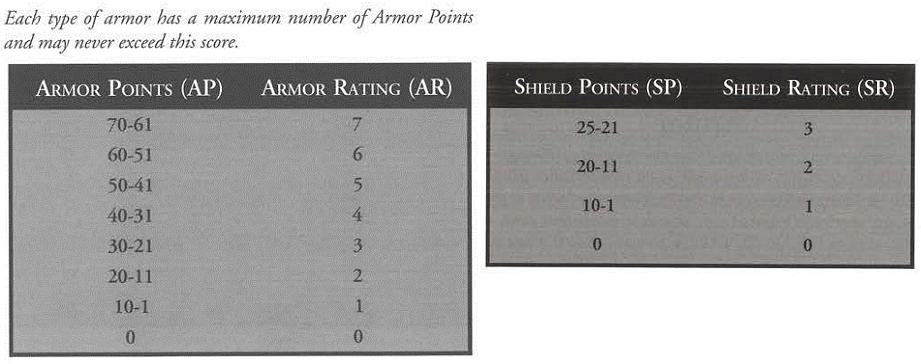More Combat, Less Book-keeping
One of the great features of Forge combat is the way your armour both absorbs damage and makes it harder to be hit. As your armour deteriorates, your Armour Rating (AR) drops, making you more vulnerable. You can repair your armour between encounters and certain weapons (e.g. crossbows), spells (e.g. the 1st level Beast Magic spell Wounding) or strategies (e.g. Backstabbing) can bypass armour.
The book-keeping involved is easy enough for players, but can be a chore for the GM. Armoured NPCs have 3 scores to keep track of: their Hit Points, their Armour Points and their AR which is pegged to their Armour Points.
Not all NPCs pose this headache. Unarmoured monsters just have a AR rating and their Hit Points are boosted, presumably to take into account their scales or leathery hide. In effect, these opponents have AR scores that cannot be reduced by damage.
Variant Combat Rules
Fixed Weapon Damage
All weapons deal a fixed amount of damage, equal to their average damage output, rounded up.
Weapon |
Damage |
dagger, long knife, sling, spiked buckler |
3 |
club, hand axe, hammer, long bow, short sword, staff |
4 |
battle axe, crossbow, mace, quarter staff, scimitar, spear, war hammer |
5 |
broad sword, long sword |
6 |
bastard sword, boar spear, flail, mattock axe, maul hammer |
7 |
Weapons still do actual damage based on their minimum possible roll and against armoured opponents this is deducted directly from Hit Points. Crossbows and long bows reverse this, dealing their flat damage minus this number to Hit Points against armoured opponents,.
Destroying NPC Armour
Rather than keeping track of Armour Points for NPCs, just keep track of the AR. Every time a PC successfully hits, they deal actual damage to the NPC's Hit Points and the rest is ignored; after this the player rolls the unmodified weapon damage die trying to roll higher than the NPC's original AR and, if successful, the AR drops by 1 Once the AR reaches 0, all future damage is applied directly to Hit Points.
Weapons that deal actual damage (crossbows, long bows) are less effective at downgrading armour and only do so on a natural 20.
A natural 1 is a miss and a dropped weapon. A natural 20 deals the weapon's damage as actual damage, directly to the enemy's Hit Points, and reduces the AR by 1 without requiring a roll.
Sample Combat Revisited (rulebook, pp49-50)
Pic the Ghantu is a PC armed with a mattock (2d6 damage, now inflicts a flat 7 but with a +4 bonus due to Strength) but Kameron is a NPC in ring armour (40 AP, 4 AR) and a large shield (15 SP, 2 SR) for a total AR 6.
On the first round, Pic hits by rolling 16. He would deal 2 points of actual damage, but instead of tracking Kameron's armour points the PC rolls 2d6 for a mattock and hopes to roll higher than 6. He succeeds, so Kameron's AR drops to 5.
Pic misses on his next attack but on his third rolls a natural 20. He deals 11 damage to Kameron and Kameron's AR automatically drops to 4.


